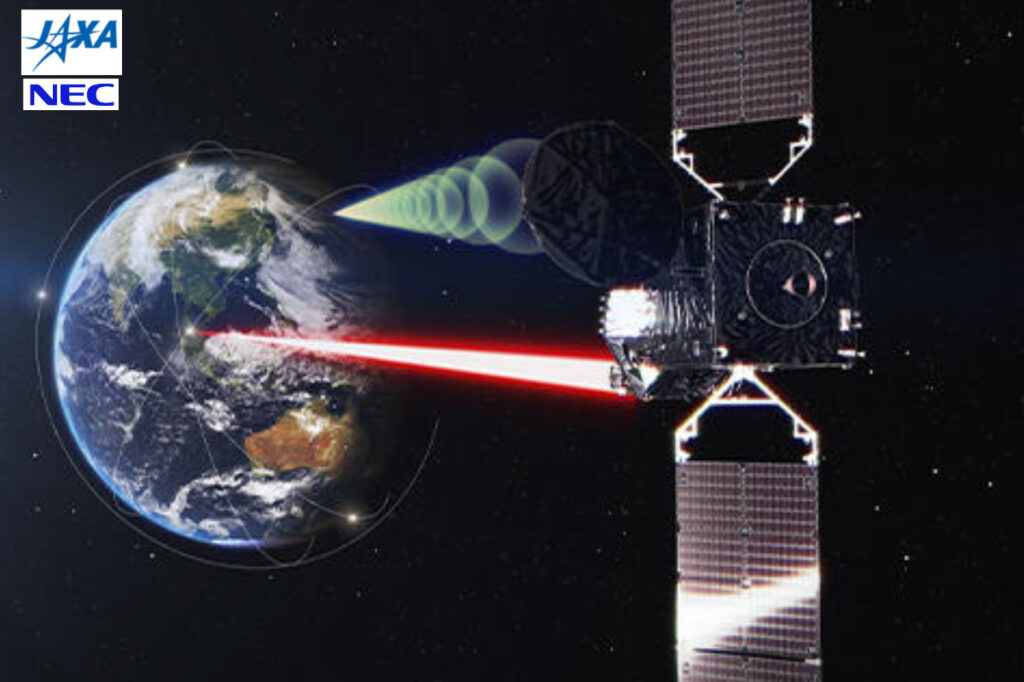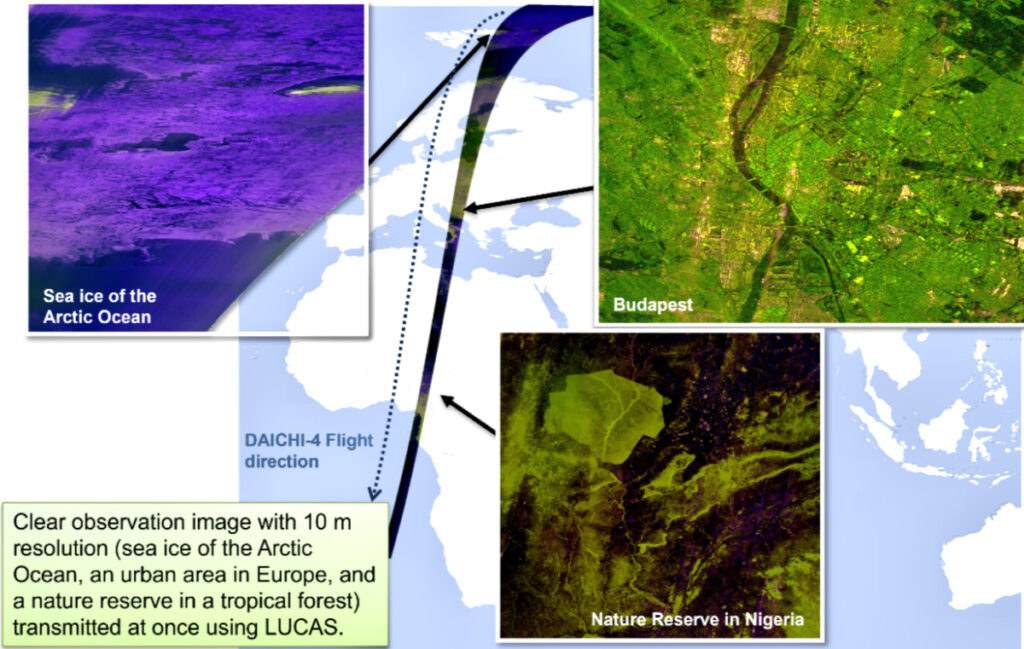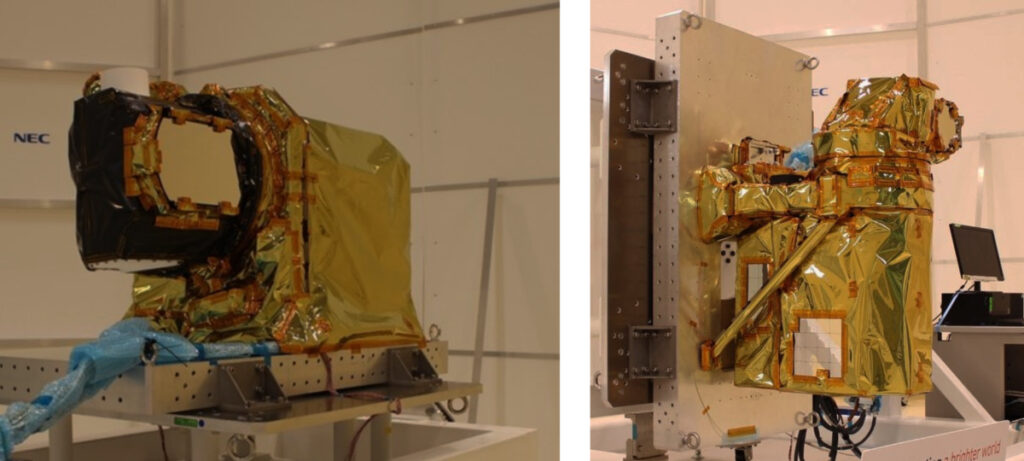
Japan Aerospace Exploration Agency (JAXA) and NEC Corporation (NEC), the prime contractor of the laser-communication terminals for the Laser Utilizing Communication System (LUCAS), performed the world’s fastest optical communication (wavelength band: 1.5 μm, communication speed: 1.8 Gbps) using LUCAS between the Advanced Land Observing Satellite-4 “DAICHI-4” (ALOS-4) and the Optical Data Relay Satellite in GEO at a distance of about 40,000 km, and successfully completed the first transmission of observation data to a ground station through the geostationary satellite.

Imagery is courtesy of JAXA.
In October of 2024, JAXA and NEC successfully achieved the optical inter-satellite communication between DAICHI-4 equipped with the Optical Leo Laser Communication Terminal (OLLCT) dedicated to an Earth Observation (EO) satellite and the Optical Data Relay Satellite equipped with the Optical Geo Laser Communication Terminal (OGLCT) dedicated to a geostationary satellite, and the technical demonstrations have continued.
As a result, DAICHI-4 observation data was successfully transmitted using optical communications.
The success of this data transmission using LUCAS enables immediate downlinking of a large amount of observation data which is difficult to achieve through direct communication to ground stations in areas lacking accessible ground stations.
The figure above shows the first image downlinked through LUCAS, generated from a large amount of mission data observed by DAICHI-4 over approximately 30 minutes, traversing the Arctic, Europe, and the African continent.
While direct transmission to ground stations requires multiple transmissions, the use of LUCAS narrowed the acquisition of observation data of vast areas to a single transmission.

JAXA and NEC have been engaging in optical communication in space since the 1990s. Optical communication in space is also identified as a technology of strategic importance in the Space Technology Strategy formulated by the Japanese government for fiscal year 2023. JAXA has advanced research and development in optical communication as a solution to the increasing capacity and immediacy requirements of data transmission for future Earth observation satellites.
NEC has been responsible for designing the LUCAS system, manufacturing laser communication terminals, supporting satellite system tests, and managing the initial functional verification operations of satellite systems. Building on this success, we will continue to contribute to the advancement of Japan’s space development by accelerating the technological development of the optical inter-satellite communication in collaboration with related organizations and partners.

Above: The Optical inter-satellite communication
instrument for LEO satellite (OLLCT—Laser-communication terminal) aboard the LEO satellite. Image is courtesy of JAXA.
Above: The Laser-communication terminal aboard
the GEO (Geostationary) satellite. (Optical inter-satellite communication instrument for GEO satellite). Image is courtesy of JAXA.
■Above photographs show only the optical components of the laser communication terminals mounted on the satellites’ exterior
■The optical component of OLLCT is smaller than that of OGLCT, resulting in improved mountability due to its reduced size.
